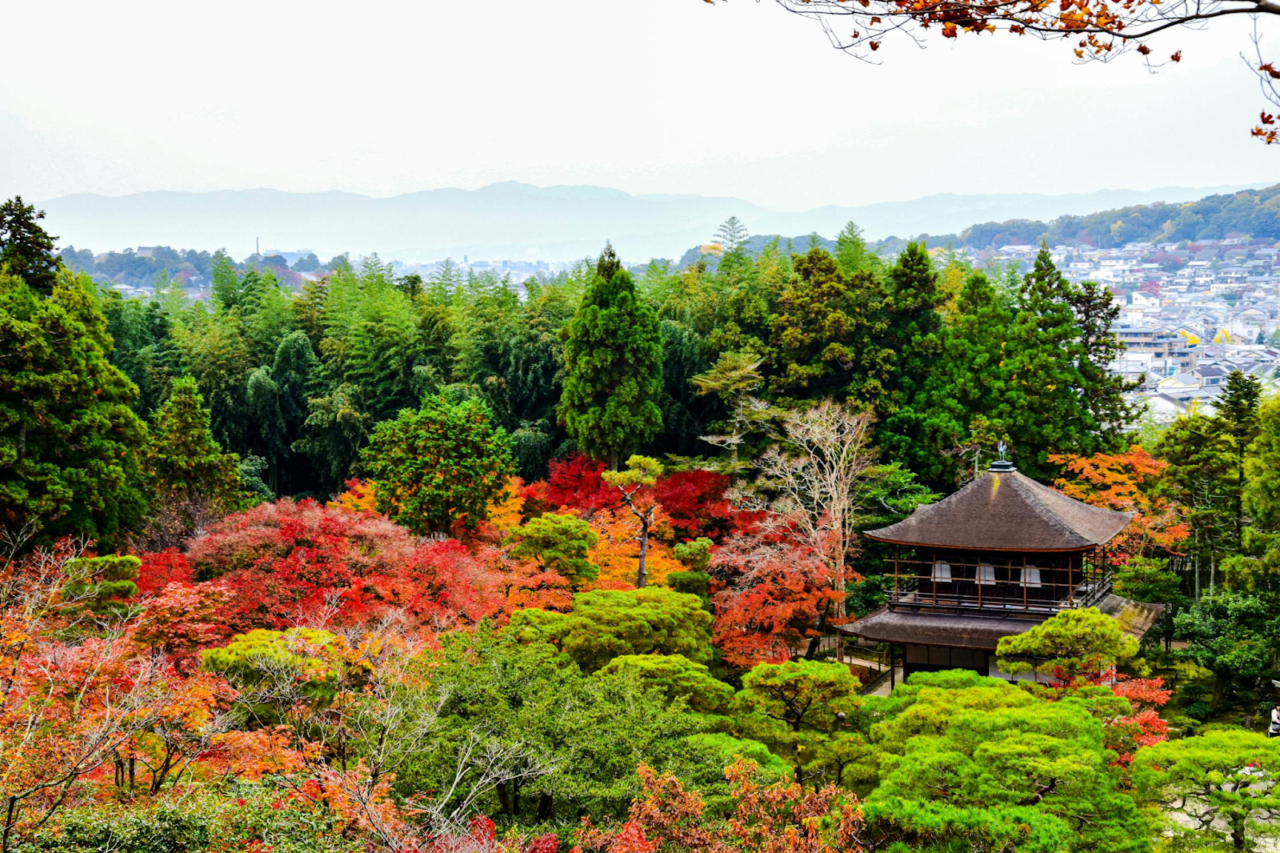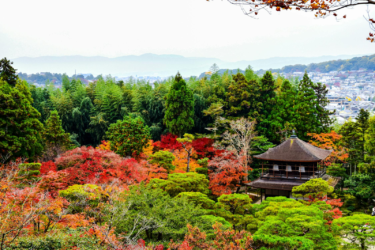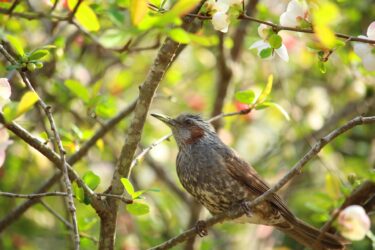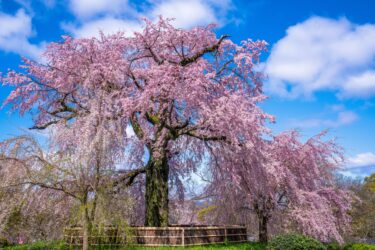Autumn. It’s a magical season just about everywhere, but fall in Kyoto just feels different. To see the best the season has to offer, we put together a list of some of the best places to see the awe-inspiring autumn leaves.
As you explore Kyoto City, you’ll see mountainsides painted in vivid shades of red, yellow, and orange. And the crunch of the maple leaves under your feet as you walk through the city’s historic temples and shrines is oh-so-satisfying.
Watching the leaves float by on the Kamo-gawa River or looking up through the kaleidoscope of leaves just before sunset will transport you to a world of wonder. The season also brings about hearty and warming meals such as hot pot and roasted chestnuts. A visit to Kyoto in autumn is an experience you don’t want to miss. Ready to learn more? Let’s get started.
Tofukuji Temple
Tofukuji Temple, established in 1236, is renowned for its expansive gardens, which become especially vibrant in autumn. Enter through the impressive 22-meter tall Sanmon Gate, dating back to 1425, and you’ll find the Hondo (main hall), a recent reconstruction from 1934, alongside early Muromachi Period buildings like the meditation hall and belfry. As you explore further, the Hojo Garden surrounds the head priest’s former quarters with unique rock gardens featuring pebbles, large rocks, and moss. The Tsutenkyo Bridge provides a fantastic vantage point for viewing the colorful autumn foliage, while the Kaisando Hall’s contrasting gardens add to the temple’s charm. The temple is accessible via a ten-minute walk from Tofukuji Station or bus stop.
Tofuku-ji Temple’s Website (Japanese only)
Kiyomizu-dera Temple
Kiyomizu-dera, founded in 778, is famous for its wooden stage that juts out over the hillside, providing spectacular views of Kyoto’s autumn colors. The temple’s elevated position offers a panoramic vista of the city and surrounding landscape, enhanced by the vibrant hues of fall. Evening illuminations are a must-see, as they cast a magical glow over the temple and its surrounding foliage. The best photography spots include the temple’s main hall and the view from the stage. Note that some online mapping apps, like Google Maps, might direct you along paths that don’t lead to the temple grounds.
The temple is accessible via a 15-minute walk from Kiyomizu-gojo Station on the Keihan Main Line or from Gion-Shijo Station on the Kyoto City Bus 206. Check the temple’s website for further information.
Kitanotenmangu
Kitanotenmangu Shrine is especially popular in autumn when its garden opens to the public, showcasing hundreds of maple trees that line the garden’s river and are beautifully illuminated in the evenings. Dedicated to Sugawara Michizane, a scholar and politician associated with Tenjin, the kami of education, the shrine is a significant site for those seeking academic success. It is also renowned for its nearly 2,000 plum trees, which bloom from February to March and are celebrated during the Baikasai tea ceremony. Additionally, a monthly flea market features a variety of vendors and food stands.
The shrine is accessible via Kyoto City Bus number 50 or by taking the Karasuma Subway Line to Imadegawa Station and catching bus 203.
Kitanotenmangu’s Website (Japanese only)
Kifune-jinja Shrine
Nestled in the mountains north of Kyoto, Kifune-jinja Shrine is known for its tranquil setting and picturesque approach lined with maple trees. The shrine’s secluded location provides a peaceful escape from the city’s hustle and bustle. Visit during the late afternoon for the best lighting and a serene atmosphere, as the sun begins to set over the autumn foliage.
To get to Kifune-jinja, take the Eizan Railway to Kibune-guchi Station, then transfer to a local bus or taxi for a short ride to the shrine.
Toji Temple
Toji Temple, a UNESCO World Heritage site established in 796, is notable for its iconic five-story pagoda. The temple grounds are beautifully framed by autumn colors, creating a striking contrast with the pagoda’s traditional architecture. Special events and illuminations during autumn enhance the temple’s beauty, making it a great spot for both daytime and evening visits.
To reach Toji Temple, walk for 10 minutes from Toji Station on the Kintetsu Kyoto Line or take a short bus ride from Kyoto Station.
Toji Temple’s Website (Japanese only)
Eikando (Zenrinji Temple)
Eikando, founded in 863, is celebrated for its stunning autumn foliage, particularly around the temple’s pond. The reflection of the colorful leaves in the water adds to the temple’s tranquil ambiance. To fully immerse yourself in the experience, explore the temple grounds early in the morning or late in the afternoon when the light is soft and the crowds are thinner.
To get to Eikando, take the Kyoto City Bus 5 or 17 to the Eikando-michi stop, then walk a short distance to the temple.
Nanzen-ji Temple
Nanzen-ji Temple, a significant Zen Buddhist temple established in 1291, features expansive gardens and a scenic aqueduct. The Sanmon Gate provides a dramatic viewpoint for admiring the autumn foliage. Explore the temple’s various gardens, each offering unique perspectives on the autumn colors, and take time to walk along the aqueduct for a picturesque experience.
To reach Nanzen-ji, take the Kyoto City Bus 5 to the Nanzenji Eikando-michi stop, or walk 10 minutes from Keage Station on the Kyoto City Subway.
Nanzen-ji Temple’s Website (Japanese only)
Shimogamo-jinja Shrine
Shimogamo-jinja Shrine, a UNESCO World Heritage site founded in the 6th century, is surrounded by the Tadasu no Mori forest. The forest’s autumn colors create a beautiful backdrop for the shrine’s ancient architecture. To avoid crowds and enjoy a more peaceful visit, consider going in the early morning hours.
To get to Shimogamo-jinja, take the Kyoto City Bus 4 to the Shimogamo-jinja-mae stop, or a 15-minute walk from Demachiyanagi Station on the Keihan Line.
Kodai-ji Temple
Kodai-ji Temple, connected to the famous samurai Toyotomi Hideyoshi, is renowned for its night illuminations during autumn. The temple’s gardens and pathways are illuminated, highlighting the vibrant autumn leaves. For the best night photography opportunities, visit during the special evening events when the colors are accentuated by the lighting.
To reach Kodai-ji Temple, take city bus 207 from Hankyu Kawaramachi Station or Keihan Shijo Station and get off at Higashiyama Yasui, then walk east for 7 minutes. Alternatively, take city bus 206 from JR Kyoto Station or Kintetsu Kyoto Station to Higashiyama Yasui and walk east for 7 minutes. For a quicker option, you can take a taxi from either JR Kyoto Station or Kintetsu Kyoto Station, which takes about 15 minutes.
Philosopher’s Path
The Philosopher’s Path, named after the philosopher Nishida Kitaro who frequented it, offers a peaceful stroll along a canal lined with stunning autumn foliage. The path is perfect for a leisurely walk, and nearby attractions such as Nanzen-ji Temple and Ginkaku-ji Temple provide additional opportunities to enjoy Kyoto’s autumn splendor. Follow the canal from Ginkaku-ji to Nanzen-ji for a scenic and immersive experience.
To access the Philosopher’s Path, take the Kyoto City Bus 5 to the Ginkaku-ji-michi stop, or walk from Ginkaku-ji Temple.
Conclusion
Kyoto is a treasure trove of autumn foliage spots, each offering a unique and enchanting experience. From the vibrant maple trees of Tofukuji Temple to the serene setting of Kifune-jinja Shrine, there’s no shortage of breathtaking views to enjoy. Plan your visit during the peak autumn season to make the most of these picturesque locations. Consider combining visits to multiple spots for a comprehensive and unforgettable autumn experience in Kyoto.








